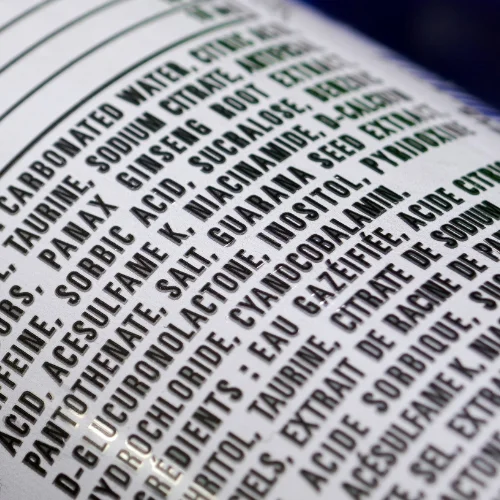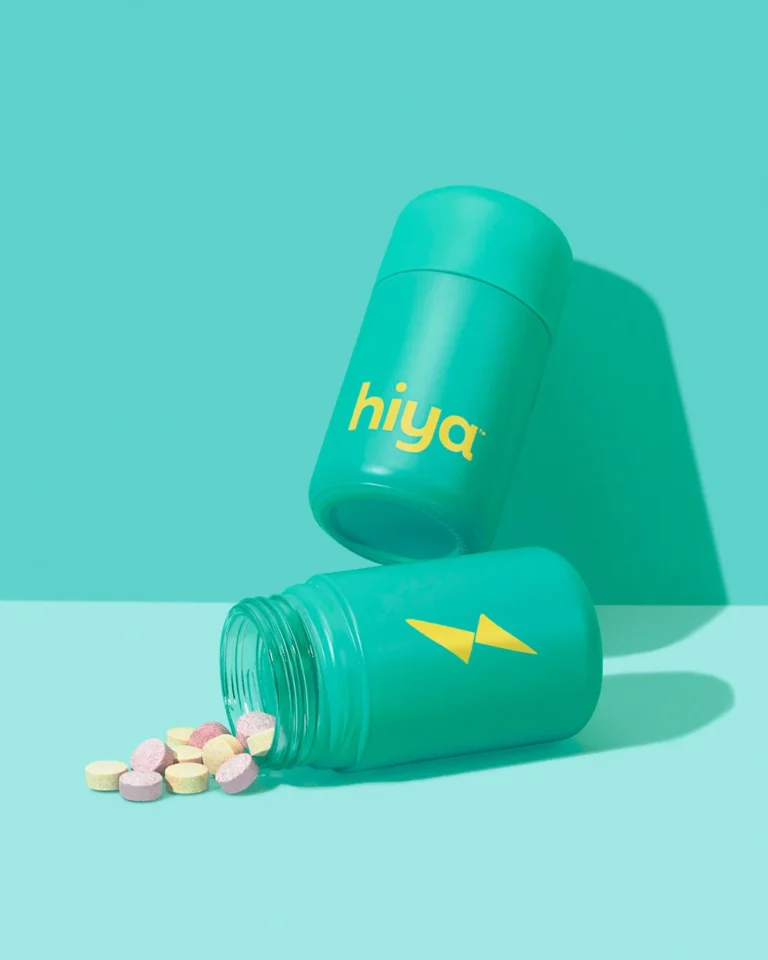SKL is reader supported. When you buy through links on our site, we may earn affiliate commission. Learn more here.
Are you new to the world of non-toxic living and curious about how to navigate the aisle with the best non-toxic grocery shopping tips and tricks?
In today’s world, grocery shopping can sometimes feel like a maze of confusing labels and health claims. With food safety and health concerns escalating, knowing what’s truly good for you and your family can seem overwhelming.
Understanding food labels can be your compass through the aisles, helping you make informed choices for safe and healthy groceries.
This guide will simplify the process, providing everything you need to know about food labels and how to shop for non-toxic groceries with confidence.

Understanding Food Labels
Food labels are your key to understanding what’s in the products you buy and how they may impact your health.
While they may seem confusing at first glance, breaking down the information on food labels can empower you to make better choices. Here are some essential components of food labels to pay attention to:
Ingredients List:
This is your roadmap to what’s inside the product. Watch out for additives and preservatives content and avoid them as much as possible.
It’s crucial to be aware that while the majority of processed foods containing additives or preservatives aren’t inherently harmful, certain preservatives like nitrates, benzoates, sulfites, sorbates, parabens, formaldehyde, BHT, and BHA can be toxic to human health, potentially triggering complications such as allergies, asthma, hypersensitivity, hyperactivity, neurological damage, and cancer in the long run.
Aim for products with shorter ingredient lists primarily composed of recognizable whole foods as much as possible.
Whole foods include natural, unprocessed ingredients like fruits, vegetables, nuts, and grains, which are inherently non-toxic.
These foods contain nutrients in their natural form without added chemicals or preservatives, making them a safer and healthier choice for consumption.
For instance, a jar of peanut butter should ideally contain just peanuts and a touch of salt, avoiding lengthy lists of unpronounceable additives.
Nutrition Facts:
Think of this section as the nutritional snapshot of the product. It includes serving size, calories, the breakdown of macronutrients (fat, carbohydrates, and protein), and micronutrients like vitamins and minerals.
Pay attention to portion sizes and aim for products with lower amounts of unhealthy fats, sugars, and sodium.
For instance, compare the nutrition facts of different breakfast cereals to choose one with less sugar and more fiber. While no excess sugar isn’t technically toxic, it’s still worth paying attention to!
Certifications and Seals:
Certifications and seals serve as indicators that a food product meets specific standards or criteria for safe and non-toxic consumption. Here are some examples of them:
- The USDA Organic Seal assures that a product is at least 95% organic and produced without synthetic pesticides or fertilizers.
- The Non-GMO Project Verified seal indicates that the product has been certified non-GMO.
- Fair Trade Certified ensures that farmers and producers have safe working conditions and are paid fair wages.
- The BRCGS certification ensures food safety and quality in food manufacturing and processing facilities.
Expiration Date:
This date is your guide to freshness and quality.
Consuming products past their expiration date can pose health risks, so always check for freshness when shopping.
Whether it’s dairy, meat, or packaged goods, always be mindful of expiration dates to ensure you’re getting the freshest products possible.
Tips for Non-Toxic Grocery Shopping
Now that you have an understanding of the basics of food labels let’s explore some practical tips on how to navigate grocery store aisles and select non-toxic products:
Choose Whole Foods:
Whenever possible, choose whole, unprocessed foods such as vegetables, fruits, whole grains, and lean proteins. These foods are naturally free from additives and preservatives, making them ideal for a non-toxic diet.
Read Labels Carefully:
Take your time to read and understand the ingredients and nutrition facts for the products you buy. Look for natural, organic ingredients and avoid products containing high fructose corn syrup, hydrogenated oils, and other harmful substances like artificial colors (e.g., Blue #1, Red #40), preservatives (e.g., BHA, BHT), and trans fats.
Buy Organic:
Whenever feasible, choose organic produce and products. Organic farming practices complement regenerative agriculture, which prioritizes soil health and biodiversity while minimizing exposure to synthetic pesticides and fertilizers, making organic foods safer for you and the environment.
Be Skeptical of Health Claims:
Don’t be swayed by flashy health claims on packaging, such as “all-natural,” “low-fat,” or “superfood.” These claims can be misleading and may not reflect the actual nutritional value or chemical content of the product. For example, “all-natural” products does not necessarily mean they’re healthy, “low-fat” foods may be high in sugar or other unhealthy ingredients (plus, fat isn’t always bad!), and “zero sugar” products may contain synthetic sweeteners that can be toxic. Instead, focus on the ingredients list and nutrition facts to make an informed decision.
Shop Local:
Supporting local farmers and producers can ensure you get fresh, high-quality products while reducing your carbon footprint.
Plan Ahead:
Before heading to the grocery store, list down your meal plan for the week. This can help you focus and avoid impulse purchases of unhealthy or unnecessary items.
Be Mindful of Packaging:
Consider the environmental impact of the products you buy by choosing items with minimal packaging or opting for reusable or recyclable packaging whenever possible.

Identifying Toxic Ingredients in Food Labels
Identifying toxic ingredients on food labels is crucial to ensure non-toxic grocery shopping. Here are some of the potentially toxic ingredients to look out for:
Seed Oils:
Refined vegetable oils like soybean, corn, canola, and sunflower oils are highly processed and rich in inflammatory omega-6 fatty acids. Excessive consumption of omega-6s can contribute to chronic inflammation, heart disease, and other health issues.
Artificial Dyes:
Synthetic food colorings like Blue #1, Blue #2, Green #3, Red #40, Yellow #5, and Yellow #6 are derived from petroleum or coal sources. They have been linked to hyperactivity, allergic reactions, and potential carcinogenic effects, particularly in children.
Palm Oil:
While palm oil itself is not toxic, its production often involves unsustainable practices that lead to deforestation, habitat loss for endangered species, and greenhouse gas emissions.
High-Fructose Corn Syrup (HFCS):
This liquid sweetener is produced from corn and is found in many processed foods and beverages. It has been associated with obesity, metabolic disorders, non-alcoholic fatty liver disease, and an increased risk of type 2 diabetes.
Artificial Sweeteners:
Aspartame, saccharin, sucralose, and others are synthetic sugar substitutes that may disrupt gut health, cause headaches, and have been linked to potential carcinogenic effects, although more research is needed.
Refined Flour:
Made by removing the nutrient-rich bran and germ from whole grains, refined flour lacks fiber, vitamins, and minerals. Overconsumption can contribute to inflammation, weight gain, and metabolic issues.
Refined Sugar:
Like refined flour, refined sugar has been stripped of its nutrients during processing. Excessive consumption has been linked to obesity, type 2 diabetes, liver problems, and an increased risk of heart disease.
Sodium Benzoate:
This preservative is used to prevent mold and bacterial growth in acidic foods. It has been linked to hyperactivity in children and may potentially form carcinogenic compounds when combined with vitamin C.
Monosodium Glutamate (MSG):
This flavor enhancer is commonly used in processed foods and has been associated with illnesses like headaches, nausea, and other adverse reactions in sensitive individuals, although the evidence is still inconclusive.
Hydrogenated Fats/Trans Fats:
These artificially produced fats are created by adding hydrogen to liquid vegetable oils to make them more solid. They can raise bad (LDL) cholesterol levels and increase the risk of heart disease.
Synthetic Preservatives:
Chemicals like BHA, BHT, and TBHQ are added to prolong shelf life but have been linked to potential carcinogenic effects, disruption of endocrine function, and other health concerns.
Nitrates/Nitrites:
These preservatives are commonly found in processed meats like bacon, hot dogs, and deli meats. They have been associated with an increased risk of certain cancers, particularly colorectal cancer.
Potassium Bromate:
Used as a flour enhancer, this compound has been linked to kidney and thyroid disorders, as well as potential carcinogenic effects, and is banned in many countries.
Sulfites:
These preservatives are used to prevent discoloration and bacterial growth in foods and beverages. They can trigger adverse reactions like headaches, rashes, and asthma attacks in sensitive individuals.
Phosphates:
These food additives are used to improve texture, moisture retention, and shelf life in processed foods. However, they have been linked to potential kidney problems and an increased risk of cardiovascular disease.
Propyl Gallate:
This synthetic antioxidant is used to prevent the oxidation of fats and oils. It has been linked to potential carcinogenic effects and endocrine disruption, although more research is needed.
Carrageenan:
Derived from red seaweed, this thickening agent is commonly used in dairy products and processed foods. It has been associated with inflammation and potential digestive issues like bloating and irritable bowel syndrome.
Olestra:
This fat substitute is used in some snack foods to provide a fatty texture without the calories. However, it can cause gastrointestinal distress and potentially interfere with the absorption of essential nutrients like vitamins A, D, E, and K.
Acrylamide:
This compound forms during high-temperature cooking processes like frying, baking, and roasting. It has been classified as a potential carcinogen by various health organizations.
Azodicarbonamide:
Used as a dough conditioner in some breads and baked goods, this compound has been linked to potential respiratory issues and cancer. It is banned in several regions including EU countries and the UK due to these concerns.
Final Thoughts
Navigating the grocery store aisles can be daunting, but with the knowledge and tools you’ve gained from this guide, you’re now armed and ready to make informed choices that prioritize your health and well-being.
Remember, reading labels is the key to unlocking a world of non-toxic, nutritious foods that nourish your body and support a healthier lifestyle.
Don’t hesitate to take your time and scrutinize each product – after all, you’re investing in your health with every purchase. Embrace the journey of non-toxic grocery shopping as an opportunity to connect and learn about the food you consume and the farmers and producers who bring it to your table.
As you move forward, celebrate the small victories – each time you choose a whole, unprocessed food or opt for an organic, non-GMO product, you’re casting a vote for a healthier future for yourself, your family, and the planet.
Helpful Resources
If you’re seeking more information on non-toxic grocery shopping and healthy eating, here are some reliable resources:
- The Environmental Working Group (EWG): www.ewg.org
- The Non-GMO Project: www.nongmoproject.org
- The Organic Trade Association: www.ota.com
.
 Enter To Win Over $1500+ In Non-Toxic Goodies!
Enter To Win Over $1500+ In Non-Toxic Goodies! 







